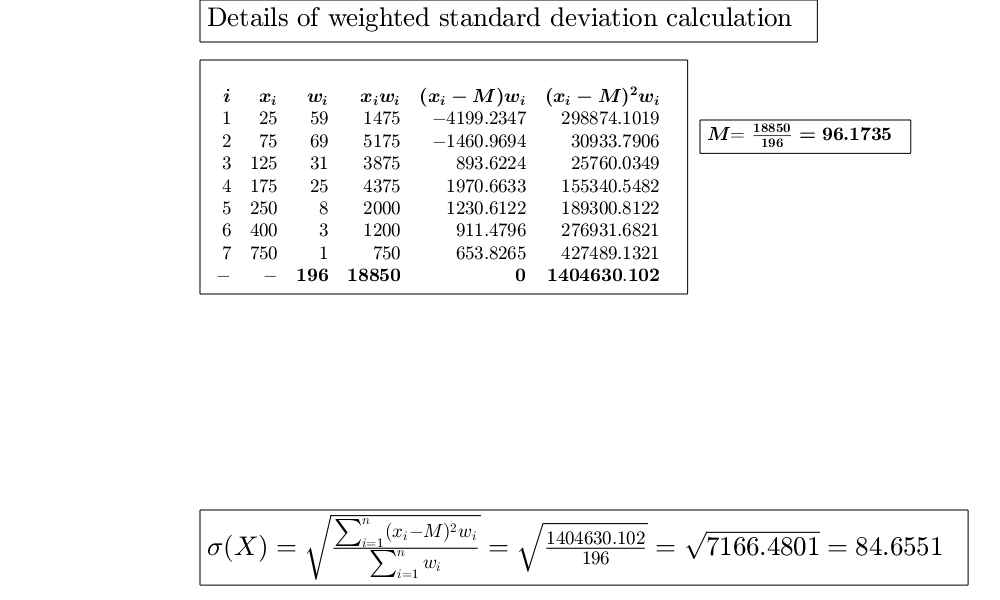GUIstd
GUIstd shows the necessary calculations to obtain the standard deviation in a GUI.
Description
Examples
Related Examples
Input Arguments
Output Arguments
References
Milioli, M.A., Riani, M., Zani, S. (2019), "Introduzione all'analisi dei dati statistici (Quarta edizione ampliata)". [MRZ]
Cerioli, A., Milioli, M.A., Riani, M. (2016), "Esercizi di statistica (Quinta edizione)". [CMR]
See Also
GUIvar
|
GUImad
|
GUIskewness

|
GUIskewness |
GUItrimmean |
 |
|
|
Functions |
|
• The developers of the toolbox • The forward search group • Terms of Use • Acknowledgments
 Example of weighted standard deviation.
Example of weighted standard deviation.